Muslim Filipinos: An Ethnic Ensemble

By Renato Perdon,
Sydney, Australia
August 22, 2013
The peopling of the Mindanao mainland and the Sulu archipelago has been predominantly based on ethnic heritage and religious tradition. While it cannot be denied that an admixture of racial stocks has been developed among these people, the basic Malayan is still in their blood. Such a strong Malayan identity was made even more enduring through time by the unifying cultural influence of Islam.
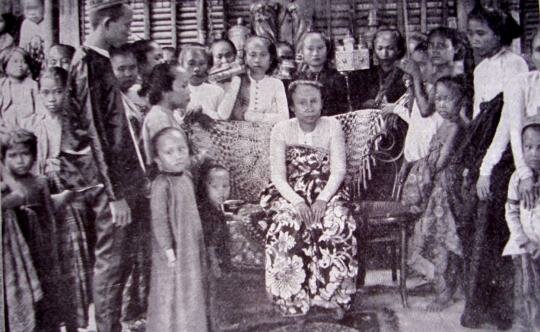 A Muslim Filipina 'Prencessa' with her attendants from William D. Boyce's 'The Philippine Islands', illus., 1914
A Muslim Filipina 'Prencessa' with her attendants from William D. Boyce's 'The Philippine Islands', illus., 1914
The late noted historian Teodoro A. Agoncillo described the Muslim Filipinos as the fiercest lover of freedom and one who is proud of is culture to the extent that one does not offer meek apologies for whatever shortcomings his culture might have. Aided by a customary religious fundamentalism, the Filipino Muslim was more successful than his Filipino brothers in the North in preserving a less adulterated ethnic tradition.
It was theorised that the early inhabitants of Mindanao and the Sulu archipelago came from the regions neighbouring Malayan states in the South, notably Borneo and the Islands of Northwestern Indonesia. Relics from pre-Islamic religious beliefs and mythology which point to the regions ancient cultural contracts with the rest of Southeast Asia and China appear to affirm this thinking. Among the ethnic people of Mindanao, the Maranaos, the Maguindanaos and he Tausugs in particular show strong Indonesian racial characteristics. Other suggests a mixture of racial influences from the Chinese, the Hindu and the Europeans.
H. Otley Byer, a renowned authority on Philippine ethnological studies, classified the ethnic people of Mindanao and Sulu into ten major language-based groups, namely: the Maguindanaos, Maranaos, Tausugs, Samals, Yakans, Badjaos, Jama Mapuns, Palawanuns, Molbogs, and the Sangils. Culturally, these groups are considered less homegenous; their cultures are variegated and the differences become even more distinct with the geographical distances separating them. Such cultural distinction are observable in their languages, customs, traditions, economic lifestyles, social and political development, the extent of Islamisation and relations with non-Muslims. Nonetheless, some unifying aspects exist, such as in the area of political affiliation. Traditionally, the Maranaos and the Maguindanaos belong to two different Sultanates while the rest of the groups belong to the Sulu Sultanate.
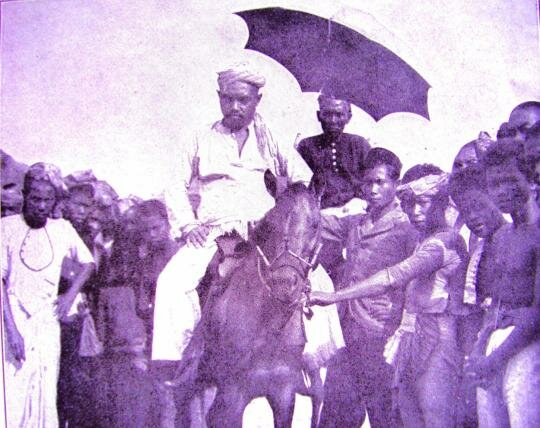 The Sultan of Sulu from William D. Boyce's 'The Philippines Islands', illus. 1914
The Sultan of Sulu from William D. Boyce's 'The Philippines Islands', illus. 1914
Men of the Current
The more pronounced cultural differences of those belonging to the Sulu Sultanate at once may be explained by the poeples geographical habitation, including their general lifestyles. The Tausugs, Samals, Yakans, and the Jama Mapuns, in particular, tend to be a sea-oriented, socially and economically. Livelihood among these people has been principally based on a current, shore and market place existence.
Outside of the Mindanao mainland, Filipino Muslims concentrate in the southern parts of Palawan, the Cagayan de Sulu Island, and the entire Sulu archipelago. The latter comprises around 500 islands extending from the western tip of Mindanao to the northwest coast of Sabah in East Malaysia.
The Tausugs are found in Jolo and Siasi Islands while the Samals are settled mainly in Tawi-Tawi Province and the northern Sulu which embraces Tawi-Tawi, Pangutaran, Sibuto, Simunul, and Balangungui Islands and some part of Jolo.
The Yakans are settled in Basilan Island while the Jama Papuns (who are Samals) live mostly in Cagayan de Sulu Island and partly in the southwestern part of Palawan. The Badjaos (they are not different from Samals) can be found in sea villages located mostly in Tawi-Tawi and Sibutu Islands and isolated sections of the islands of Siasi and Jolo and Zamboanga.
Achaeological, linguistic and folkloric studies point out that, prior to the coming of Islam, Mindanao and Sulu had already established trade relations with Indonesia and Indo-China as early as the 13th century. Authorities on Muslim culture, however, differ on the observation as to what particular group founded the early settlement of the region.
Before the end of the 14th century, the Samals were believed to have begun migrating from Johore in great numbers with many of them settling in the Sulu Archipelago. But the influx of the Samal settlers in the predominantly Tausug enclave appeared not to have supplanted at all the traditional Tausug culture which had developed into quite a superior degree over that of the Samals. Closely related to the Samals are the Badjaos, the Yakans, and the Jama Mapuns. The Badjaos are seafaring people living throughout the Sulu archipelago between Zamboanga and Northeast Borneo. They are also called Samal Laut or Samal delaut. It is claimed that Badjaos descended from the first Samal group who migrated to the archipelago. Unlike other migratory groups in the Philippines, the Badjaos never had permanent settlements like those of the Tausugs and the Samals.
The Yakans who are found mainly in Basilan Island are people of culturally marked divergences compared with their Filipino Muslims groups. The coming of the Yakans is said to have followed the migratory drive of the rest of the pre-Islamic inhabitants of the area. They have, however, assimilated some Tausugs or Samal influences.
Considered the latest ethnic group which migrated to the region are the Jama Mapuns. They belong to the Samal group and are sedentary. They are found in Cagayan de Sulu Island and thinly scattered in Southern Palawan and North Borneo. The Jama Mapuns are sometimes called Samal Cagayan. Although they have some customs similar to the Tausugs, they nonetheless, have essentially remained Samal in culture.
Archaeological findings in the southeast and in Cagayan de Sulu Island indicated that, during the 9th and 11th centuries, the place was already an important trade centre, a crossroad of the commercial activities between the archipelagos and its neighbouring areas.
Socio-Political Structure
Filipino Muslim social life is deeply influenced by their religion. It is a synthesis of indigenous practices and Islam. It is considered more than a religion. It is a way of life. All Muslims are brothers who are taught the practical teaching of the Koran so that the contemporary Muslim social structure is still deeply rooted in almost the same folk-Islamic tradition developed during the early part of the Islamisation of the archipelago.
The Muslim social set-up now slightly differs from the independent pre-Islamic social institutions that once dominated the rest of ancient Philippines. In the past the people were socially classified into the nobles, the freemen and the dependents. This social classification is mainly determined by class, status, and powers. The nobles represented the ruling class while those who belong to the last two social levels were the followers.
The numerous organised communities, which were called differently in Tausug, Samal, Yakan, and Subanun, were similar to the barangays. They functioned independently and were governed by their own customary laws and chieftains. Although there were existing inter-community alliances for trade and mutual protection, each unit retained its independence.
The Islamisation of the area and the introduction of the sultanate as a political authority slowly affected the community structure. The Tausugs, in particular, became aware of the sultanate as a permanent fixture of their political and social institutions. However, the power of the Sultan of Sulu was not absolute. His decision was influenced by the powerful datus who usually composed the ruma vichara, an important body in decision making. Islamic religious and political ideas played an important part in the assimilation of indigenous beliefs and practices which characterised the sultanate concept of political administration.
The hierarchy of the sultanate is based on three ethnic levels. At the uppermost of the heirarchial system are the Tausugs, the dominant group, followed by the Samal groups and Yakans. This stratification has been eroded as the Sultanate gradually evolved into a mere spiritual institution commanding respect from its subjects. The abolition of slavery and the changes in land tenture further weakened the traditional stratification.
The Tausugs represent the nobles in the social strata while the commoners refer mostly to the Samals. The lowest segment of society consists of the outsiders. This has, however, been minimised, although not obliterated altogether, by modernisation.
The Samals, although second only to the Tausugs, were at the top of the political hierarchy in their respective domains. This gave way to opportunities for accumulating wealth, power, and status. This allowed them to rise in some respects to important positions in society. Today, they have as many opportunities as their historically superior Tausug brothers to go up the ladder. The sultanate, which absorbed the different kinship or barangay units into one political group, was edged out by the municipal system introduced during the American administration. As a result, the sultanate became the provincial political authority while the various units became the municipalities and the barrios, respectively.
A Tri-Dimensional Economy
The population of the Sulu archipelago is primarily dependent on marine resources. Deep-sea fishing is an existing large-scale industry. Throughout the archipelago, fishing is practiced, particularly in those area inhabited by the Samals and the Badjaos such as in the major fishing grounds of Jolo, Tawi-Tawi and Sitangkai. In the Sulu sea area which is considered the most fertile fishing ground in the country, about 3,075,101 kilograms of total fish production was recorded in 1972. Other marine products found in the area include pearls, shells and black coral.
A variety of fishing techniques is used. Rattan fish traps are utilised in the shallow coral reefs and the old reliable hook-and-line is widely used. Fish poisons extracted from local plants are often used in shallow waters to stun fish. This is different from another fishing methods using home-made dynamite. Women and children sometimes engage in fishing, but mainly after small fish and molluscs. Large nets are also used by some full-time fishermen who have the money to invest. Some have ventured into trade that extends beyond the territorial waters of the Philippines to Indonesia and Borneo.
The Samals being mainly coastal dwellers and seafaring people live in foreshore areas. Fishing is a mode of subsistence but some Samals, particularly those living in the eastern part of Sulu, also engage in agriculture to supplement their livelihood. The Samals are the real fishermen of Sulu. They play major part in the economy of the archipelago. The Tausugs do not consider themselves good fishermen and for this reason their fish requirements are often supplied by the Samals. They in turn provide the forest products and crops that the Samals and coastal dwellers need.
Although tied up with the sea, the Samals have not improved their lot much. They do not concentrate on a single occupational specialisation. Their subsistence is derived from food gathering, fishing, and, recently, farming and doing manual labor. They are good at pearl diving. Communal fishing is very popular among the Badjaos. Some of them engage in commercial fishing. A night catch is salted in gallon cans and tins and sold to Chinese middlemen. Shark fishing is done in deeper waters of the archipelago. Their women are expert mat weavers using geometric lines for decorative design.
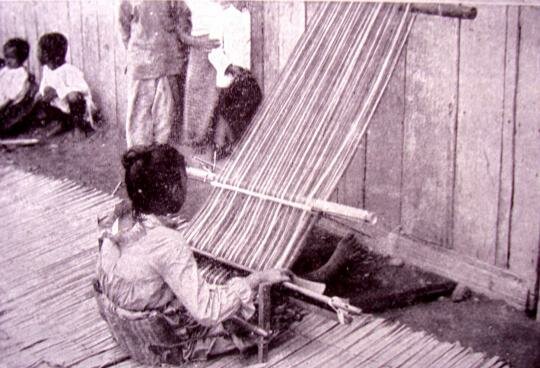 A Muslim Filipina weaver, from William D. Boyce's 'The Philippine Islands', illus. 1914.
A Muslim Filipina weaver, from William D. Boyce's 'The Philippine Islands', illus. 1914.
In agriculture the major crops of most farmers of Sulu are cassava, rice, corn, coconut, banana and abaca. Few tropical fruits are cultivated as much as abaca and coconut which are produced in a commercial scale.
Shifting cultivation or non-irrigation farming is practiced. Most of the arable lands are planted to rice or coconut. Because of certain religious beliefs, rice farming techniques among the Tausugs are conservative. In addition to rice and cassava as main crops, early maturing cereals such as corn, sorghum and sesame are also cultivated. Yams and peanuts are likewise grown. Influenced by contemporary needs, rice farming is slowly being displaced by coconut cultivation and as a consequence rice as a major staple food has to be imported. Copra is the main end product of coconut cultivators.
Traditional farming among the ethnic communities in the country was affected when Spanish Governor General Don Sebastian Hurtado de Corcuera ordered in 1642 the compulsory planting of coconut throughout the Philippines. The uma, which is a small cultivated farm, was common among both Tausug and Samal communities. So was the kabbun, which was a plantation type of farming usually devoted to cash crops. The cash-crop orientation of economic activities has actually altered the traditional patterns of ethnic societies in the region.
The Samals also engage in sea trade, mainly to obtain products or goods which could be sold or bartered for needs or for cash. In this sense, they served as intermediaries between hinterland producers and coastal merchants.
The Yakans have a semi-sedentary economy. They practice a certain amount of dry agriculture and live chiefly on root crops. Hunting which was once a profitable endeavour has given way to trade with lowland villagers.
The main source of food is agriculture with upland rice as the most important crop. There is no irrigation system and harvest is done once a year. Almost all Yakans grow rice but not enough for their requirements. Root crops such as sweet potatoes are planted in the field between planting seasons. Vegetables and tropical fruits are equally important in farming. Coconut palm is becoming a valuable as in other parts of the Philippines. The trunk of the coconut tree is used a sugarcane squeezer while the leaves are for basket making. Brooms are made from the ribs. Coconut oil which is as valuable as rice in everyday life is produced in sufficient quantity. Moreover, due to the importance given to copra production, coconut is now grown to a larger extent, approximating the situation in the Bicol and Quezon provinces where it is widely cultivated.
Although coast dwellers, not themselves sailors, the sedentary Yakans are good boat builders. The build better outrigger boats for the coastal people than other ethnic groups. Ironically, though most of the islands re heavily forested, forest industries development has not made a headway.
Industries are based on fishing and agricultural activities such as rice milling, copra processing, abaca production, and semi-finished fish and shell materials manufacturing. Cottage industries are encouraged and supported. Textile weaving, boat building, tools and weapons making, production of decorative goods from brass, bronze, gold and silver combined with coral and shell products, are some of the secondary industries.
Among the Filipino Muslims of the Sulu archipelago, the Tausugs are considered not only as a politically dominant group but also as an economically stable people. Trade and commerce are the main sources of income for those living in the urban areas with barter trading as their favourite route towards well-off status. Hunting, logging, shipping, metal craft and other related industries are some of the minor areas of activity.
Diversity of Ethnic relationship
Historically, the Tausugs consider themselves superior to the Samals and regard their group as the true Muslims of the area. They believe they descended from the old nobility. Unusual bravery and high respect for power and authority traditionally reinforced these attitudes. The Tausugs are extremely hospitable, generous and friendly to people in their area, characteristics which are also true among the Samals. The Tausugs are more cosmopolitan, being more exposed and advanced. But both are open to external influences.
For their part, the sedentary Samals think of themselves as honest hardworking and religious. They regard the Tausugts as cruel and treacherous and nomadic Samal Laut or Pala-u (Badjaos) as primitive, pagan, and uneducated. Perhaps, because of the attitudes of the Tausugs and Samals, the Badjaos are considered more as outcasts or luwaans as they are sometimes referred to pejoratively. They are the least intensively Islamized of all the Filipino Muslims, being mainly animistic in their customs and beliefs. A Badjao is not proud but there is in him that strong sense of humility. He abhors violence and shocked to be involved in it. He tends to be individualistic and weary of strangers in his daily activities.
To the Badjaos, ones kinship is generally found within his own geographic area. Most of them fail to adopt a sedentary life as their economic lifestyle seems to be centred on maritime numadism which they consider as their only means of survival. Some Badjaos have wandered throughout the entire Sulu Sea but others seldom travel beyond a radius of 40 kilometers from their sea villages which consist mainly of boats moored near a permanent settlement. It was for this type of dwelling that they are sometimes called Pala-u. The Badjaos like to travel and are known to abandon their current port at the slightest trouble. They often travel for economic reasons and partly from fear of the sedentary Samals and the Tausugs. Among the young men the natural yearning is to satisfy his wanderlust. As stated earlier, the Yakans are somewhat isolated from the rest of the ethnolinguistic groups. It is not surprising that their relationship with the Tausugs, the Samals, and the Badjaos is reduced to a minimum.
Among the ethnic groups, marriage is often limited only to unions within one group. Although considered before as undesirable, intermarriage among people of different ethnic groups is now, however, slowly being accepted. An increasing number of intermarriages between Badjaos and sedentary Samals has been particularly observed in Bongao. Further north, Tausug-Samal unions are also becoming ordinary features of the community.
Religion is another index for identifying relationships between groups, which have been largely influenced by traditional values. Both the Tausugs and Samals share religious customs with other coastal Muslims in Borneo. More recently the migration of Christians from the Visayas and Luzon is slowly changing the economic and social lifestyles in the region.
Range of Marriage Customs
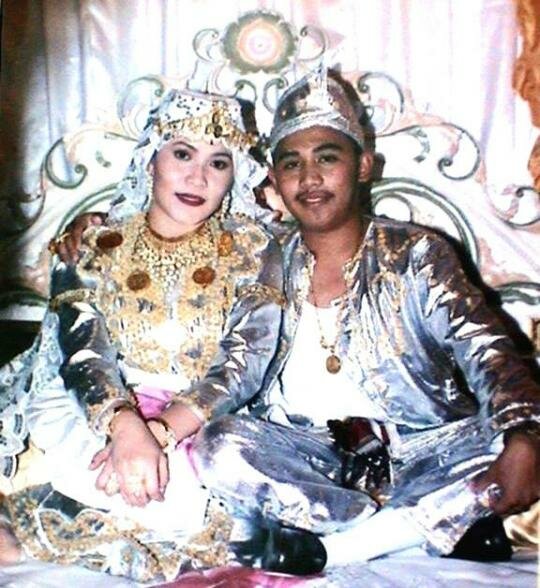 A Royal Muslim Royal Wedding, courtesy of http://www.lazamboangatimes.com/
A Royal Muslim Royal Wedding, courtesy of http://www.lazamboangatimes.com/
The blending of Islamic and pre-Islamic elements in the Filipino Muslim process of acculturation is a unique feature of ethnic cultures in the region. Courtship and marriage are reflections of this uniqueness.
Family involvement in marriage is still a practice even among the Muslims of today, although in a lesser degree of rigidity as before. Even distant relatives of both sides are given the right to voice their opinion on any proposed union. Notwithstanding the prohibition of Islamic law that women should not get married against their will, Muslim parents often prevail in a marital decision. Union is based on family status in the community. Though the Muslim male is allowed to marry a woman not belonging to his social level, the female is not allowed the same right.
Marriage outside religious lines was once taboo but is now tolerated, particularly among educated Filipino Muslims. Attitudes towards pre-marital sex amongst the Christian Filipinos have slowly been changed, but Muslims engaging in the same run the risk of disapproval of marriage plans or the imposition of customary penalties.
In the old days, marriage was arranged by parents without considering the true feelings of their children. Marriage based on true love or affection as very rare. Daughters were not consulted on marriage decisions. Her feelings towards the man were ignored and unimportant. The parents, after all, were regarded as the best person who could judge what was right or wrong for their children.
But the advent of modern living has started to lessen the rigidity of parental intervention. As a result, contemporary Muslim marriage is now determined and governed more by the decision of both the parties concerned in cooperation with the parents and their families.
As practiced, the selection of the bride is based on the status, wealth, prestige and power of the brides family. A brides personality including her capacity to fit into the role of a wife or mistress, as the case may be, is also looked into. Other considerations include education, training, and experience.
The bridegroom is chosen basically on the basis of his wealth, parents status, his reputation as a worker and ability to get along with his future in-laws and people. He is also judged by his potential as a protector of his extended kinsmens honour.
The traditional marriage among Filipino Muslims takes place at as young as an age as 17 for the groom and 15 for the bride. The Samals marry even younger. Today, the timing of marriage is affected by such considerations as the need for education and capacity of the bridegrooms family to raise the bride gift, similar to the dowry requirements of other ethnic groups.
Parents make arrangement of the marriage of their children, the fathers consent being necessary for the marriage of a daughter. Couple who marry against this tradition are usually ostracised socially and, in worse cases, parents may even disown them. Restoration of recognition is only made when both parties accept the punishment which in the past was 50 lashes with a piece of rattan, or some other severe punishment prescribed by customary law.
Among the Tausugs, the marriage preparations start at least one day before the schedule date. During that day, a gift to the bride is delivered by the grooms relatives. Failure or deviation from what was agreed would be sufficient reason to forgo the plan. Early the next morning, kinsmen, friends, and guests of the couple gather during the morning at the parties respective houses. A cow or water buffalo is slaughtered for the feasting while professional musicians provided gong music for the merry-making and socials. In the evening, the actual marriage ceremony is held and performed in Arabic. The newlywed couple begin married life in the girls household and later move to the grooms parents home or build their own house.
The Art Of Dressing
The people of the region already had indigenous cultures and traditions even before Islam was introduced. Most of these have been retained to the present day. Some of the inhabitants might have been Westernised in their way of dressing but many of them remain unaffected and still cling to their dress styles which are visibly Malayan in character. This particularly evident among the Tausugs and Yakans.
In spite of the strong Western influences on the way of dressing among most ethnic groups, the Yakans have preserved a traditional dress style. Both sexes use the same type of blouse called badju which has tight fitting sleeves and an opening at the front. The lower part garment is the trousers called sawal which, like the blouse, is also tight fitting. The best trousers are made of hand-woven striped material called laup but, in some cases, they are made of cotton. Black trousers and blouse are very common among men and women although white is mainly reserved for the male Yakan.
Male and female attires are marked b accessories. The Yakan male uses a handwoven head cloth called pis and a wide belt called kandit which is fashioned out of a 15-meter long red cotton material. A pentagonal breast covering is worn over the womens blouse. The costliest part of the female costume is a hand-woven rectangular cloth called saputangan which is used as a belt to hold up the short skirt covering the trousers.
Contemporary Yakan women now wear various costumes, a slight departure from the traditional attire. A thin loosely hanging blouse worn over a camisun is now very common. Women wear a variety of ornaments such as earrings, bracelets and finger rings mostly made out of shells, silver, and gold. During the festival, Yakan women make up themselves. Nails of the ring and little finger of the left hand are painted silver while a large comb adorns the hair.
Generally, the inhabitants of Sulu wear the habul or patadyung, a garment very similar to Indonesias sarong. Both sexes wear the very popular sawal which is made of soft cloth. Men often wear sawal with polo shirt, and around the waist they wear a wide belt serving as pockets for money and documents. The rule for Filipino Muslim women is modesty in dressing, the ideal being exposure only of the hands and feet and head from the neck up.
When women wear the sawal they usually wear it with a short-sleeved V-necked blouse or a lengthy blouse reaching below the hips. Sometimes women add a folded patadyung slung from the right shoulder diagonally across the body to complete their sawal and blouse ensemble. A really dressed-up Tausug women will wear batawi, a blouse with a tight-fitting bodice which flares at the waist. The neck is scooped deep in front to display a pendant. Sometimes it is dotted with gold buttons on the sleeves, around the neckline and along the front opening.
The Spirit World and Islam
Religion is an important unifying force in the development of the Filipino Muslims as they are known today. Islam was the true cause of the failure of the Hispanisation campaign of the Spaniards for more than 300 years. It can even be said that Islam had made most of the people of Sulu, Basilan, and Tawi-Tawi the proud and strong people that they are today.
Like the rest of the Muslim world, the Filipino Muslims of Sulu believe in one God, whose prophet is Muhammad and whose teachings are embodied in the Koran. Although some have scant knowledge of Islam as a religion they embrace the faith early in life, by reason of birth.
Among the Tausugs, the Sultan is traditionally considered the descendant of the Prophet Muhammad. According to popular tradition, Muhammad was the Sultan of Mecca and the Sultanate of Jolo merely continued this line. They regard the authority of the Sultan to have stemmed from the Caliph. The Sultan is regarded as Gods representative on earth as reflected in the Muslim ritual of kissing his handcomparable to the kissing of the Prophet himself. Filipino Muslims believe that loyalty to the Sultan is a prerequisite for being a true Muslim
As spiritual leader the Sultan is said to represent the Islamic integrity of his subjects. In the past, his role contributed to the cohesion of society. And it is this unity that made the Sulatanate independent for about 500 years.
When the Tausugs embraced Islam, their traditional institutions were reorganised along folk-Islamic lines. This is also true with other Muslim groups in the archipelago. There are mosques and langgals (Iocal prayer houses) in every community of size throughout the island of Jolo. In Siasi there are langgals serving the Muslim communities although no mosque or masjid has been established in the area. The same situation can be said of Tawi-Tawi communities except Simunul wehere the remains of the first mosque of a Makdum still stand.
In spite of its unifying effect, Islam has an underlying importance in identifying the various ethnic groups. The Badjaos are differentiated from other groups because of their lesser Islamic acculturation. They are generally considered animistic in their religious beliefs which properly justify their migratory lifestyle. They have no mosques to serve their religious needs although they sometimes join their sedentary brothers in their langgals.
The same situation also prevails among educated Muslims who regard the Samal Muslims in the South as less pure in Muslim devotion than the Tausugs. Ironcialy, both Samals and Tausugs identify themselves with the community of Islam. In religious rites, the same rituals are presented though in different forms and ways. This is mainly due to the degree of folk-religion which has been assimilated into Islamic ritual. Folk beliefs and traditions within a certain community are often the criteria for distinguishing religious practices among the Muslims in the Philippines.
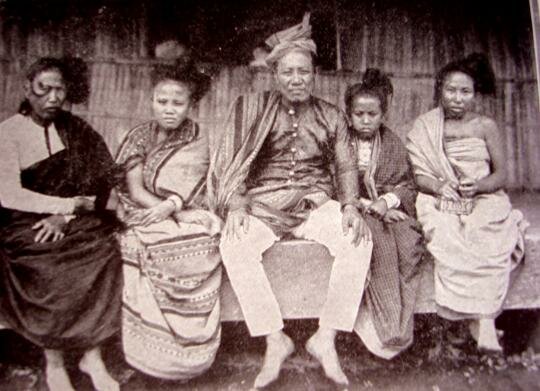 A Muslim Filipino Dato with his three wives and a daughter, from William D. Boyce's 'The Philippine Islands', illus., 1914
A Muslim Filipino Dato with his three wives and a daughter, from William D. Boyce's 'The Philippine Islands', illus., 1914
Like the Samals, the Yakans also retained the old customs and traditions in the practice of Islam. To them, these customs are as truly Islamic as those that other would recognise as Muslim. But the Yakans are not very religious. The traditional five prayers a day are rarely observed, not even by their imam for that matter. Only a few people attend the Friday services, which explains why few Yakans join the pilgrimage to Mecca. In spite of the many pre-Islamic features incorporated into Islamic practices, this group strongly consider themselves as Muslim and their religion as Islam. Likewise, the Subanuns, who are not Muslims, have religious beliefs and practices akin to the anitu worship common throughout the traditional societies in the Philippines and Southeast Asia. The rituals and ceremonies which involve the rites of passage and other activities connected with agriculture, the home, and conflicts, govern social life in general.
The Christian populace, except in predominantly Christian centers such as the cities and towns, either observe the Catholic or Protestant rites, although they are themselves integrated into Tuasug, Samal, or Yakan societies. They sometimes observe the local folk-Islamic customs and beliefs.
